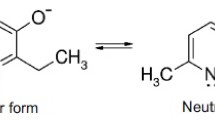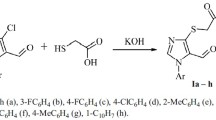Abstract
Many toxic chemicals, including CC14, induce the formation of lipid peroxides in the liver (Plaa and Witschi, 1976; Tappel, 1980). Lipid peroxidation, therefore, might be one of the mechanisms involved in their toxicity. However, the direct measurement of lipid peroxides, the primary candidates for toxic reactions, cannot be quantitatively determined either in vitro or in vivo. Only decomposition products of lipid peroxides are measurable, such as malondialdehyde or alkanes (for review see Tappel, 1980). Furthermore, it has been assumed that the decomposition products of lipid peroxides induced by CC14 are the toxic intermediates, rather than the lipid peroxide itself (Mead, 1976; Miguel, 1977; Recknagel et al., 1977; Gardner, 1979). Dialyzable and extractable cytotoxic products occurring during lipid peroxidation have been described recently by several authors (Roders et al., 1978; Willis et al., 1979; Benedetti et al., 1979a,b,1980; Schulze and Kappus, 1980).
Access this chapter
Tax calculation will be finalised at checkout
Purchases are for personal use only
Preview
Unable to display preview. Download preview PDF.
Similar content being viewed by others
References
Asakawa, T., and Matsushita, S., 1979, Thiobarbituric acid test for detecting lipid peroxides, Lipids 14: 401.
Benedetti, A., Casini, A.F., Ferrali, M., and Comporti, M., 1979a,Effects of diffusible products of peroxidation of rat liver microsomal lipids, Biochem. J. 180:303.
Benedetti, A., Casini, A.F., Ferrali, M., and Comporti, M., 1979b, Extraction and partial characterization of dialysable products originating from the peroxidation of liver microsomal lipids and inhibiting microsomal glucose 6-phosphatase activity, Biochem. Pharmacol. 28:2909.
Benedetti, A., Ferrali, M., Casini, A.F., Pieri, S., and Comporti, M., 1980, Foot-edema induced by carbonyl compounds originating from the peroxidation of liver microsomal lipids, Biochem. Pharmacol. 29:121.
Bus, J.S., and Gibson, J.E., 1979, Lipid peroxidation and its role in toxicity, in: Reviews in Biochemical Toxicology, Vol. 1, Hodgson, E., Bend, J.R., and Philpot, R.M., eds., Elsevier, New York, p. 125.
Donovan, D.H., and Menzel, D.B., 1978, Mechanisms of lipid peroxidation: iron catalyzed decomposition of fatty acid hydroperoxides as the basis of hydrocarbon evolution in vivo, Experientia 34: 775.
Dumelin, E.E., and Tappel, A.L., 1977, Hydrocarbon gases produced during in vitro peroxidation of polyunsaturated fatty acids and decomposition of preformed hydroperoxides, Lipids 12: 894.
Gardner, H.W., 1979, Lipid hydroperoxide reactivity with proteins and amino acids: a review, J. Agric. Food Chem., 27:220.
Guzelian, P.S., and Swisher, R.W., 1979, Degradation of cytochrome P-450 haem by carbon tetrachloride and 2-allyl-2-isopropylacetamide in rat liver in vivo and in vitro, Biochem. J. 184:481.
Hruszkewycz, A.M., Glende, E.A., and Recknagel, R.O. 1978, Destruction of microsomal cytochrome P-450 and glucose-6-phosphatase by lipids extracted from per-oxidized microsomes, Toxicol. Appl. Pharmacol. 46:695.
Kappus, H., Kieczka, H., Scheulen, M., and Remmer, H., 1977, Molecular aspects of catechol and pyrogallol inhibition of liver microsomal lipid peroxidation stimulated by ferrous ion-ADP-complexes or by carbon tetrachloride, Naunyn-Schmiedeberg’s Arch. Pharmacol. 300:179.
Kappus, H., Köster, U., Köster-Albrecht, D., Kieczka, H., and Remmer, H., 1978, Lipid peroxidation induced by ethanol and halogenated hydrocarbons in vivo as measured by ethane exhalation, in: Functions of Glutathione in Liver and Kidney, H. Sies, and A. Wendel, eds., Springer, Berlin, p. 176.
Kieczka, H., and Kappus, H., 1980, Oxygen dependence of CC14-induced lipid peroxidation in vitro and in vivo, Toxicol. Letters 5:191.
Köster, U., Albrecht, D., and Kappus, H., 1977, Evidence for carbon tetrachloride-and ethanol-induced lipid peroxidation in vivo demonstrated by ethane production in mice and rats, Toxicol. Appl. Pharmacol. 41:639.
Kornbrust, D.J., and Mavis, R.D., 1980, Microsomal lipid peroxidation. I. Role of iron and NADPH, Mol. Pharmacol., 17:400.
Mead,F., 1976, Free radical mechanisms of lipid damage and consequences for cellular membranes, in: Free Radicals in Biology, Vol. I, W.A. Pryor, ed., Academic Press, New York, p. 51.
Miguel, J., Oro, J., Bensch, K.G., and Johnson, J.E., 1977, Lipofuscin: fine-structural and biochemical studies, in: Free Radicals in Biology, Vol. III, W.A. Pryor, ed., Academic Press, New York, p. 133.
Ota, M., Sato, N., Uemura, H., and Obara, K., 1975, Lowering effect of carbon tetrachloride on microsomal cytochrome P-450 of rat liver, Chem. Biol. Interact. 11:265.
Plaa, G.L., and Witschi, H., 1976, Chemicals,drugs, and lipid peroxidation, Ann. Rev. Pharmacol. Toxicol. 16:125.
Porter, N.A., Nixon, J., and Isaac, R., 1976, Cyclic peroxides and the thiobarbituric assay, Biochim. Biophys. Acta 441:506.
Pryor, W.A., Stanley, J.P., and Blair, E., 1976, Autoxidation of polyunsaturated fatty acids: II. A suggested mechanism for the formation of TBA-reactive materials from prostaglandin-like endoperoxides, Lipids 11: 370.
Recknagel, R.O., Glende, E.A., and Hruszkewycz, A.M., 1977, Chemical mechanisms in carbon tetrachloride toxicity, in: Free Radicals in Biology, Vol. III, W.A. Pryor, ed., Academic Press, New York, p. 97.
Reynolds, E.S., and Moslen, M.T., 1980, Free-radical damage in liver, in: Free Radicals in Biology, Vol. IV, W.A. Pryor, ed., Academic Press, New York, p. 49.
Riely, C.A., Cohen, G., and Lieberman, M., 1974, Ethane evolution: a new index of lipid peroxidation, Science 183: 208.
Roders, M.K., Glende, E.A., and Recknagel, R.O., 1978, NADPH-dependent microsomal lipid peroxidation and the problem of pathological action at a distance - new data on induction of red cell damage, Biochem. Pharmacol. 27:437.
Roza, M., and Francke, A., 1978, Cyclic peroxides from a soya lipoxygenase-catalysed oxygenation of methyl linolenate, Biochim. Biophys. Acta 528:119.
Schulze, R.M., and Kappus, H., 1980, Lysis of erythrocytes as a result of microsomal lipid peroxidation induced by CC14 or FeCl2, Res. Commun. Chem. Pathol. Pharmacol., 27:129.
Slater, T.F., 1979, Mechanisms of protection against the damage produced in biological systems by oxygen-derived radicals, in: Oxygen Free Radicals and Tissue Damage, Ciba Found. Symp. 65, Excerpta Med., Amsterdam, p. 143.
Svingen, B.A., Buege, J.A., O’Neal, F.O., and Aust, S.D., 1979, The mechanism of NADPH-dependent lipid peroxidation - the propagation of lipid peroxidation, J. Biol. Chem. 254:5892.
Tappel, A.L., 1980, Measurement of and protection from in vivo lipid peroxidation, in: Free Radicals in Biology, Vol. IV, Academic Press, New York, p. 1.
Taylor, S.L., and Tappel, A.L., 1976, Effect of dietary antioxidants and phenobarbital pretreatment on microsomal lipid peroxidation and activation by carbon tetrachloride, Life Sci. 19: 1151.
Willis, R.J., Roders, M.K., Waller, R.L., Glende,E.A., and Recknagel, R.O., 1979, Use of vitamin E deficient red cells to detect a dialyzable hemolytic factor produced by peroxidizing rat liver microsomes, Life Sci. 24: 1075.
Author information
Authors and Affiliations
Editor information
Editors and Affiliations
Rights and permissions
Copyright information
© 1982 Springer Science+Business Media New York
About this chapter
Cite this chapter
Kappus, H., Kieczka, H., Muliawan, H., Schulze, R.M., Ottenwälder, H. (1982). Influence of Ferrous Ions on CCl4-Induced Lipid Peroxidation. In: Snyder, R., et al. Biological Reactive Intermediates—II. Advances in Experimental Medicine and Biology, vol 136. Springer, New York, NY. https://doi.org/10.1007/978-1-4757-0674-1_60
Download citation
DOI: https://doi.org/10.1007/978-1-4757-0674-1_60
Published:
Publisher Name: Springer, New York, NY
Print ISBN: 978-1-4757-0676-5
Online ISBN: 978-1-4757-0674-1
eBook Packages: Springer Book Archive




